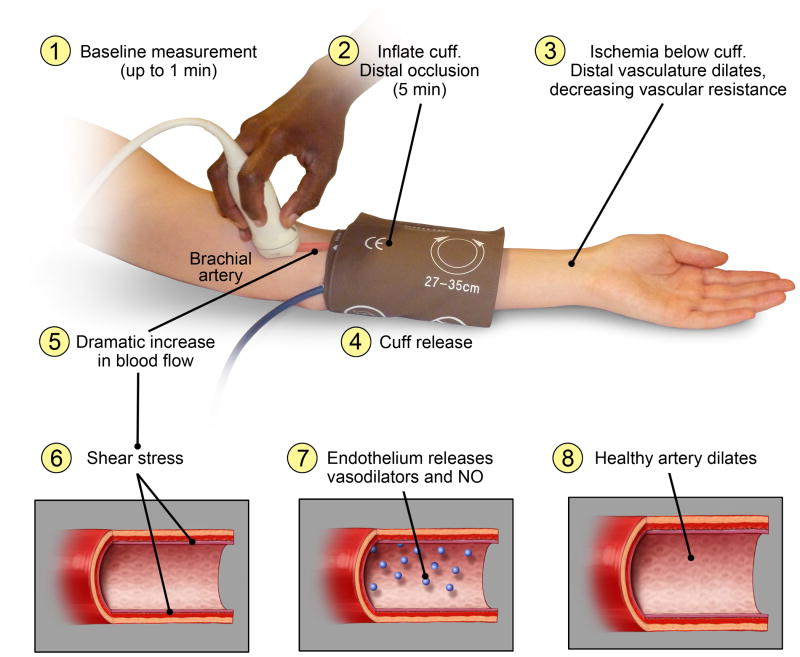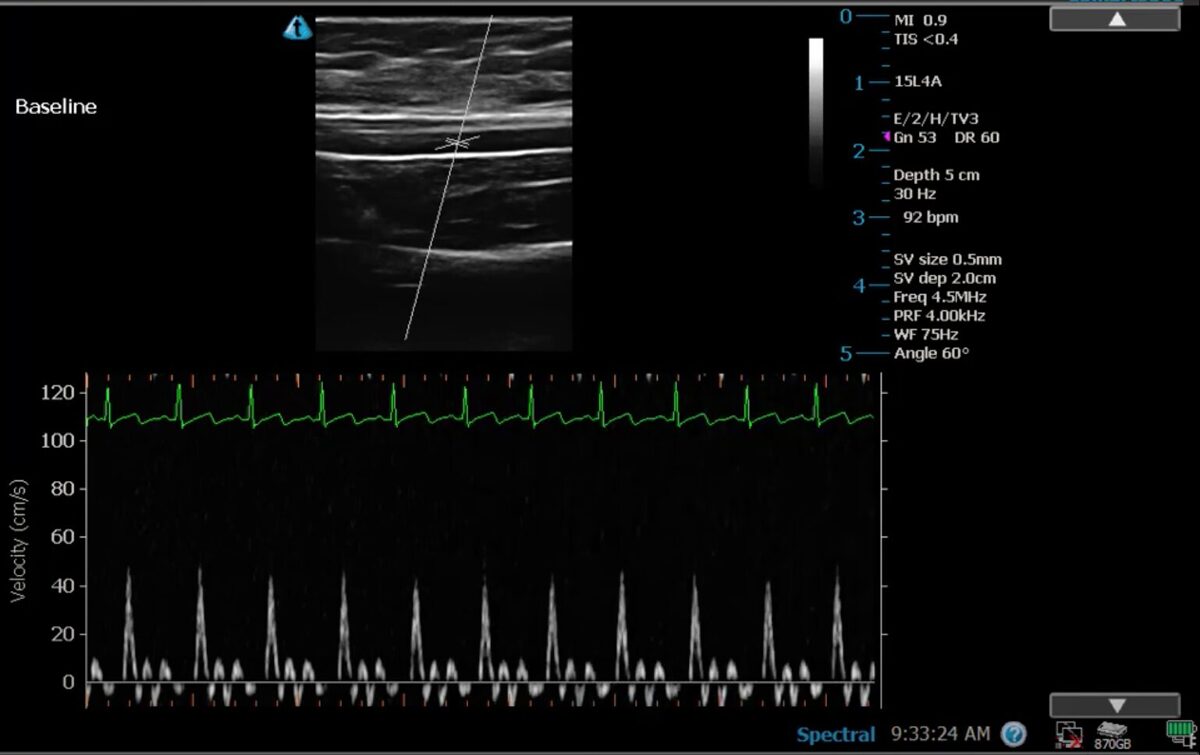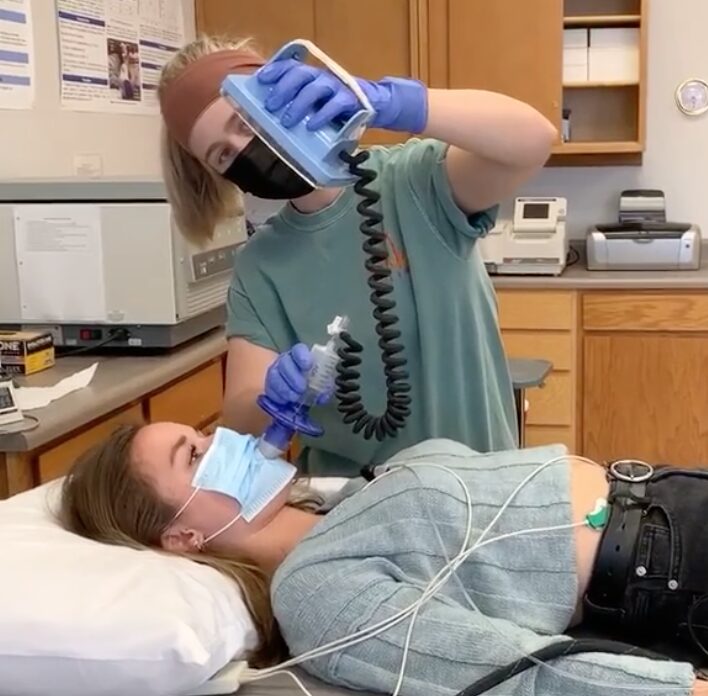What we do in the Cardiovascular Regulation Lab
Endothelial Function Assessment: We can evaluate the endothelium, or the inner lining of the blood vessel, through a test called flow mediated vasodilation. High blood flow in a vessel creates shear stress against the lining of the vessel. This is a major stimulus for vasodilation, or widening of the vessel. In our lab, we use ultrasound imaging to examine the brachial artery (a blood vessel in the upper arm). Inflating a high-pressure cuff around the forearm lets us (safely) temporarily stop circulation to your arm. After a short period of time, the cuff is released and blood rushes in, inducing shear stress and releasing vasodilators, chemicals that cause the vessel to widen. The ultrasound allows us to image the vessel to quantify the dilatory response, as well as the blood flow response.


Cold Pressor Test: A participant places their hand into a container that is 50% ice and 50% water. The cold causes the blood vessels to constrict or decrease in diameter. When the vessels constrict, your blood pressure rises. We measure the response in the beat-to-beat blood pressure and also obtain brachial (upper arm) blood pressure each minute throughout the test.

Mental Stress Test: A participant is shown a two- or three- digit number on a computer screen and asked to verbally perform subtraction using either the number 6 or 7. They are encouraged to answer very quickly and are told when they are incorrect. A new number appears on the screen every 5-10 seconds for the duration of the test. This induces stress from the challenge of the problems and the embarrassment of answering the question wrong. The stress causes a measurable increase in blood pressure.
 Valsalva Maneuver: The Valsalva Maneuver allows us to assess something called baroreflex sensitivity. The baroreflex is a mechanism that helps regulate changes in blood pressure by controlling factors such as heart rate and total peripheral resistance. To do this maneuver, we connect a mouthpiece to a viral filter and pressure gauge. With the mouthpiece securely in the participant's mouth, the participant will breathe out to reach a pressure of 40 mmHg, which feels a lot like blowing up a small balloon. The participant will hold that pressure for 20 seconds while we measure several physiological variables.
Valsalva Maneuver: The Valsalva Maneuver allows us to assess something called baroreflex sensitivity. The baroreflex is a mechanism that helps regulate changes in blood pressure by controlling factors such as heart rate and total peripheral resistance. To do this maneuver, we connect a mouthpiece to a viral filter and pressure gauge. With the mouthpiece securely in the participant's mouth, the participant will breathe out to reach a pressure of 40 mmHg, which feels a lot like blowing up a small balloon. The participant will hold that pressure for 20 seconds while we measure several physiological variables.

Graded Maximal Exercise Test: "Graded" refers to the test's design. As time continues, the difficulty of the exercise increases. For our current study, participants ride a stationary bicycle where the resistance becomes more challenging each minute. As exercise intensity increases, blood pressure will also increase. The participant continues to ride until they cannot continue or wish to stop, allowing us to measure their maximal blood pressure and heart rate.
Head-Up Tilt: Have you ever stood up fast and got light-headed and dizzy? This test would be used to assess some of these issues. This is also known as HUT, this test is used to determine how changes in body position can affect your blood pressure, heart rate, as well as other variables such as total peripheral resistance and muscle sympathetic nerve activity. Participants will lay on a table that will tilt at different angles. Participants are tilted such that they are almost standing upright. Their heart rate and blood pressure are monitored closely throughout. This can be used to assess “tilt table tolerance” or “orthostatic tolerance.”

Lower Body Negative Pressure: We can measure gravitational stress with this technique. Participants are placed in a chamber up to the level of the iliac crest. Next, air from the chamber is removed via a vacuum to decrease the pressure in the chamber (negative pressure). By isolating the lower body, blood will be redistributed from the upper body to the lower body. This simulates standing while the individual is laying down.
Lower Body Positive Pressure: We can also shift blood volume toward the upper body by increasing the pressure (positive pressure) in the lower body chamber. This simulates what astronauts experience when traveling in space and are exposed to microgravity.